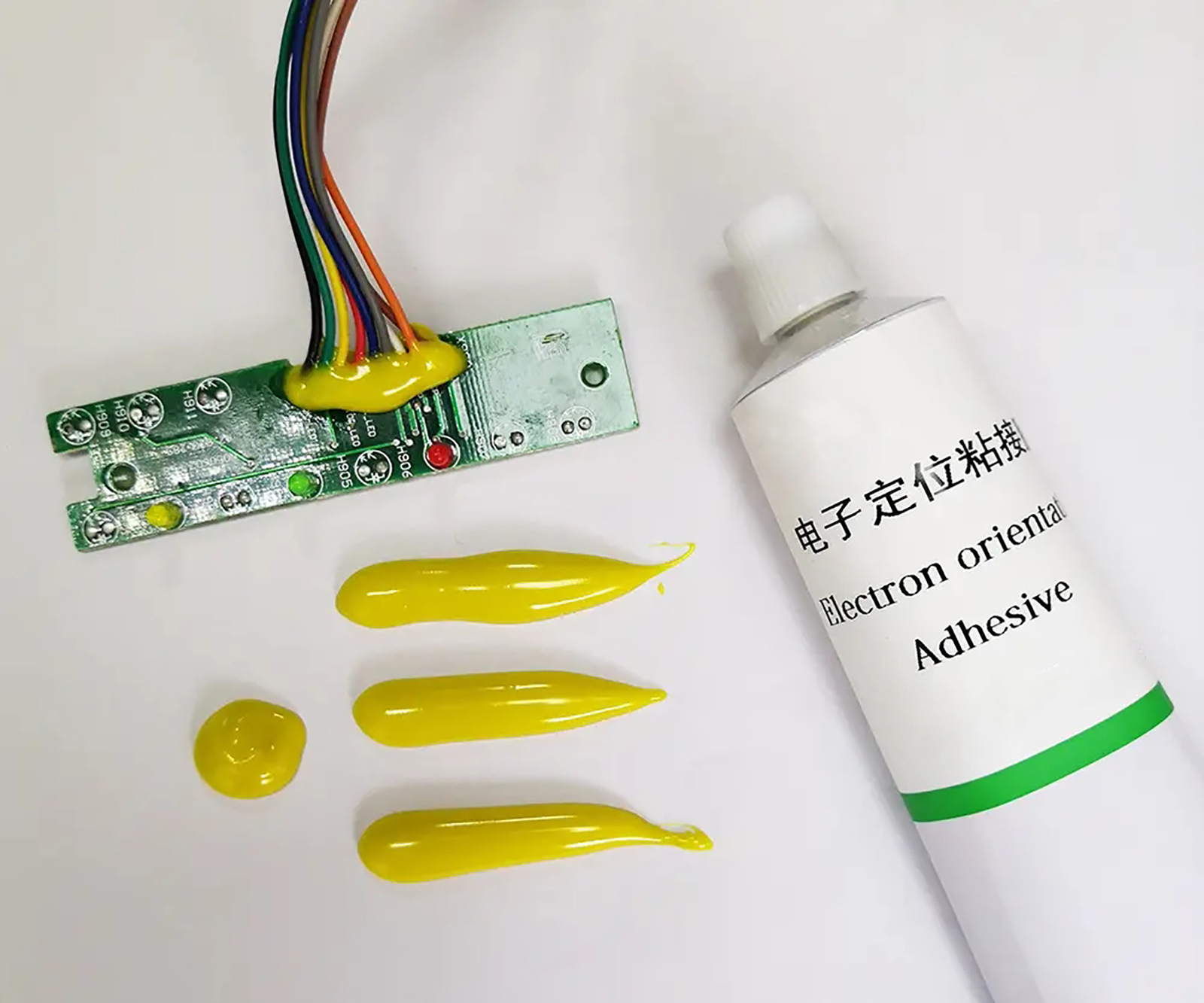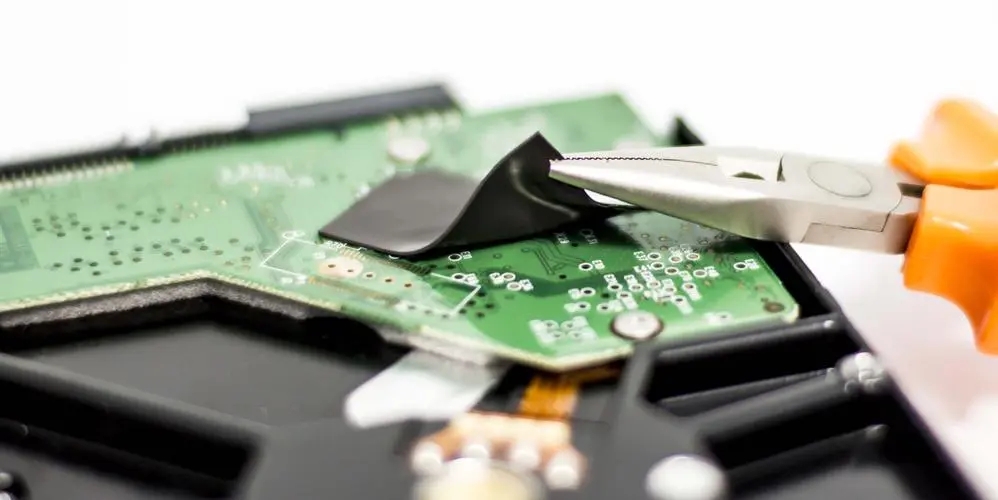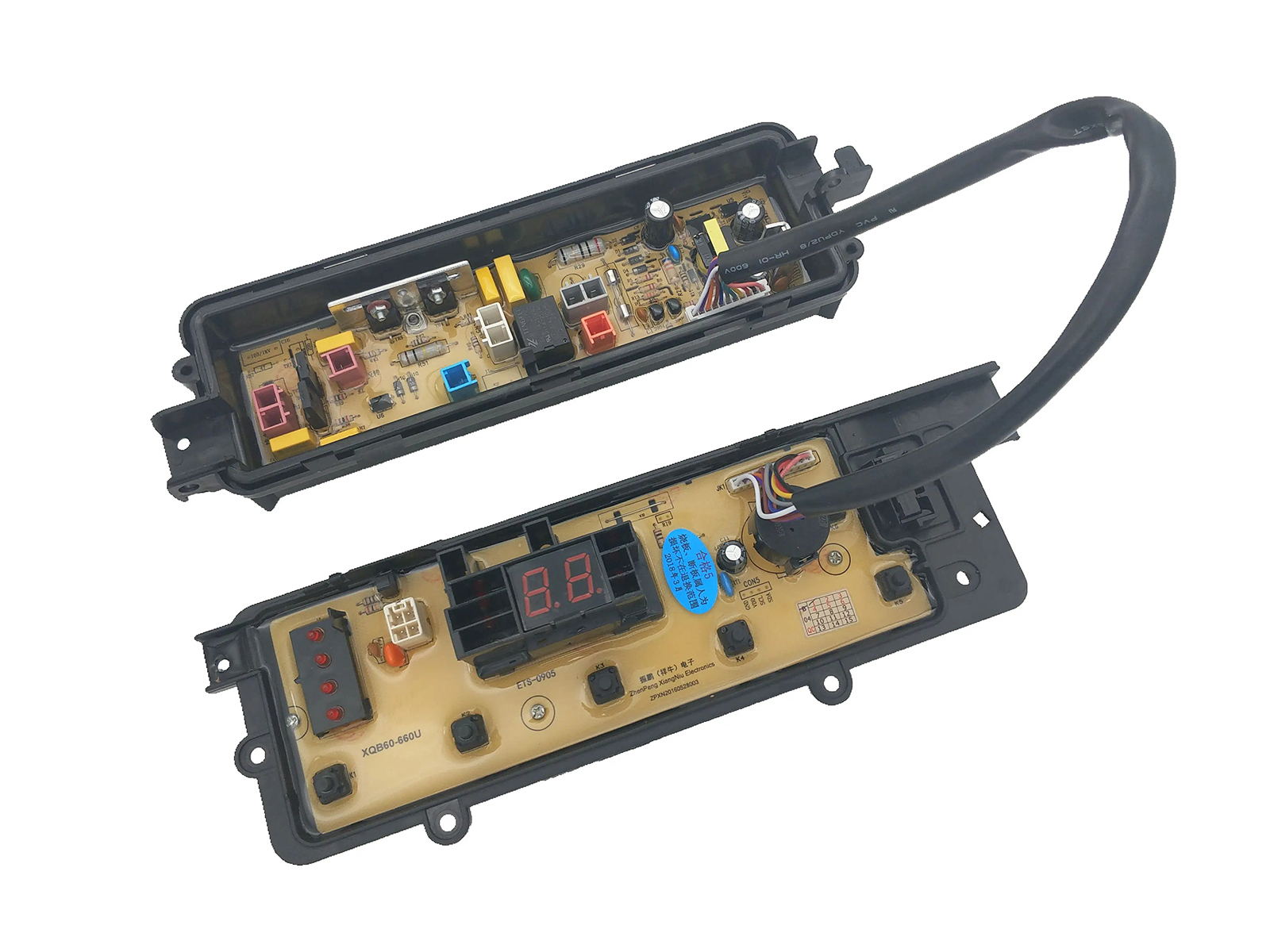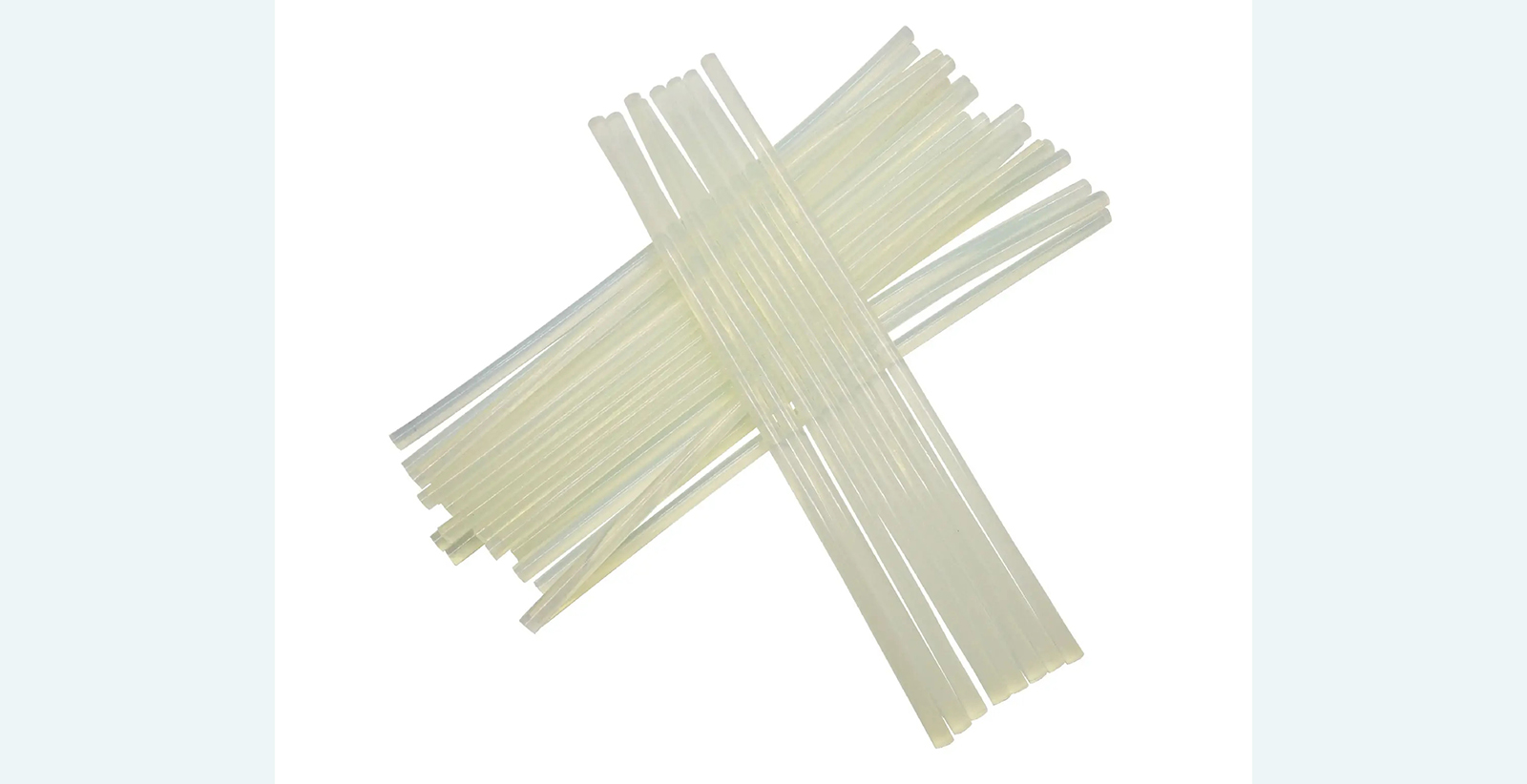Red glue is a kind of polyolefin compound, which is easy to solidify after being heated. When the temperature it receives reaches the solidification point of 150°C, the red glue begins to change from paste to solid. Using this feature, it can be used for dispensing or printing. The SMD components are fixed in the same way, and the circuit board components can be heated and cured by oven or reflow soldering by using SMD red glue.

Main function: The main function of red glue is to fix the patch components of the circuit board, mainly for bonding, or used together with solder paste as a reinforcing and fixing function.
2. Yellow gum
The yellow glue used in circuit boards is a water-based adhesive with a pungent smell. It is a soft self-adhesive gel-like substance with excellent insulation, moisture-proof, shock-proof and thermal conductivity, making electronic components The device operates safely under harsh conditions.
It is prone to curing, and the curing speed is related to the ambient temperature, humidity and wind speed: the higher the temperature, the lower the humidity, the higher the wind speed, the faster the curing speed, and vice versa. When the painted parts are placed in the air, the phenomenon of skinning will occur slowly. Note that the operation should be completed before the surface is skinned.

Main functions: Inductors, coils, transformers, electrolytic capacitors, receivers and other electronic products are fixed, with the function of protecting and sealing electronic components, and can be used for potting of electrical components, potting of high-voltage components, moisture-proof coating of circuit boards, etc.
3. Thermal silica gel
Thermally conductive silicone is a high-end thermally conductive compound, and its non-solidification and non-conductive properties can avoid risks such as short circuits. Thermally conductive adhesive sealing silicone rubber is a one-component, thermally conductive, room temperature curing silicone adhesive sealant.
It is through the condensation reaction of moisture in the air to release low molecules to cause cross-linking and curing, and vulcanize into high-performance elastomers. It has excellent resistance to alternating cold and heat, aging resistance and electrical insulation. And has excellent moisture resistance, shock resistance, corona resistance, leakage resistance and chemical medium resistance. It can be used continuously at -60~~280°C and maintains its performance. It does not swell and has good adhesion to most metal and non-metal materials, and can be used for electronic components
Thermally conductive silica gel, also known as thermally conductive paste and thermal paste, is a highly thermally conductive insulating silicone material that almost never solidifies, and can maintain the grease state during use for a long time at a temperature of -50°C-+250°C. It not only has excellent electrical insulation, but also has excellent thermal conductivity, and at the same time has low oil separation (tends to zero), high and low temperature resistance, water resistance, ozone resistance, and weather aging resistance. It is characterized by non-toxic, odorless and non-corrosive, in line with ROHS standards and related environmental protection requirements, and stable chemical and physical properties.
Performance advantages
1. The range and stability of thermal conductivity
2. Bridging the process tolerance in the structure, reducing the process tolerance requirements of radiators and heat dissipation structural parts
3. EMC, insulation performance
Thermally conductive silica gel has high thermal conductivity, excellent thermal conductivity, good electrical insulation, wide service temperature, good service stability, low consistency and good construction performance.

Thermally conductive silica gel can be widely coated on various electronic products, the contact surface between heating elements (power tubes, silicon controlled rectifiers, electric heating stacks, etc.) It acts as a heat transfer medium and has properties such as moisture-proof, dust-proof, corrosion-proof, and shock-proof. It is suitable for surface coating or overall potting of various microwave devices such as microwave communication, microwave transmission equipment, microwave special power supply, and voltage stabilized power supply. This type of silicon material provides excellent thermal conductivity for electronic components that generate heat. Such as: transistors, CPU assembly, thermistors, temperature sensors, automotive electronic components, car refrigerators, power modules, printer heads, etc. K thermal silicone sheet.
Main function: It is used to fill the gap between the heating element and the heat sink, and increase their contact area, so as to achieve the best heat conduction effect, so that the heat of the electronic components can be effectively emitted and transmitted when the electronic components are working.
4. Silicone glue
Silicone glue is an ointment-like material that cures to a tough, rubber-like solid when exposed to moisture in the air. Because silicone glue is often used for bonding and sealing glass, it is commonly known as glass glue, and the glue should be sealed and stored. The mixed rubber should be used up once to avoid waste.
Silicone sealant is made of hydroxyl-terminated polydimethylsiloxane as the main film-forming substance, supplemented with plasticizers, fillers, cross-linking agents, coupling agents and catalysts, and mixed under high-temperature dehydration and vacuum A kind of paste, its film-forming and curing mechanism.

The first is that after the crosslinking agent in the system contacts the moisture in the atmosphere, the hydrolyzable functional group undergoes a hydrolysis reaction rapidly to form silanol. The Si-OH of its silanol undergoes a condensation crosslinking reaction with the Si-OH at both ends of the polydimethylsiloxane to form an elastomer with a three-dimensional network structure. Silicone sealants have excellent bonding performance, good elasticity, weathering resistance, UV resistance, ozone resistance, etc., showing good application performance, so they are widely used in construction, electrical and electronic, machinery manufacturing, aerospace, automotive, etc. Industry, medical and health and other fields.
Although silicone sealants are widely used in modern industry and have broad market prospects, there are still many problems. For example, most silicone sealants now achieve heat-resistant and flame-retardant effects by adding heat-resistant agents or flame retardants. , but most heat-resistant agents are metal oxides or rare earth elements, and there are compatibility problems with the system; flame retardants are all halogen-based, phosphorus-based and inorganic flame retardants, adding these substances will cause poor compatibility and burn When producing toxic substances and causing environmental pollution and other problems; and but the gas permeability coefficient of existing silicone sealant products is relatively large (about 10 ~ 15g/m2·d), it is easy to be attacked by microorganisms in a hot and humid environment, so that moldy, Loss of watertight seal.
Therefore, it is very necessary to add an appropriate amount of anti-mold agent to the silicone sealant to obtain a silicone sealant with excellent high temperature resistance and anti-mold performance.
Main functions: Widely used in electronic modules, sensors, electronic components and other occasions that require potting, insulation and flame retardancy, as well as bonding of electronic components and insulation between fixed components, etc.
5. Hot melt adhesive
The hot melt adhesive strip is a solid adhesive made of ethylene-vinyl acetate polymer (EVA) with modified rosin resin or petroleum resin and other ingredients. It is a plastic, non-toxic, odorless, green and environmentally friendly Adhesive, the physical state of hot melt adhesive changes with temperature within a certain temperature range, while the chemical properties remain unchanged. It does not contain water or solvents at all, and has the characteristics of fast adhesion, high strength, aging resistance, non-toxicity, good thermal stability, and film toughness.




